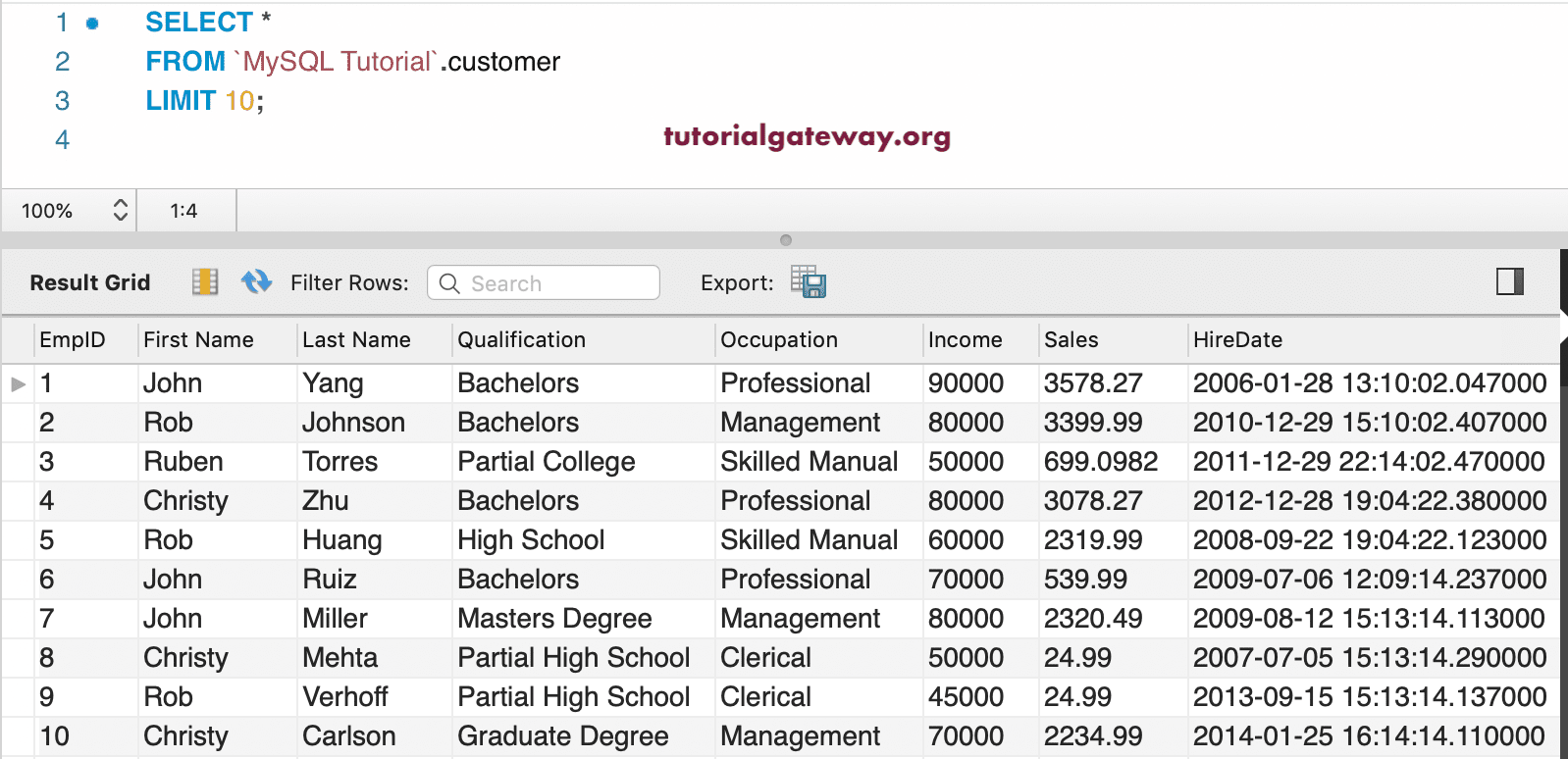
In first step, we will sort the result set in descending order.For up-to-date information operating system file size limits, refer to the documentation specific to your operating system. Second, you use the LIMIT clause to get the nth most expensive product. The effective maximum table size for MySQL databases is usually determined by operating system constraints on file sizes, not by MySQL internal limits.First, you sort the result set in descending order.However, you can use MySQL LIMIT to answer those kinds of questions. MySQL Restrictions and Limitations / Limits in MySQL Chapter 12 Limits in MySQL Table of Contents 12.1 Identifier Length Limits 12.2 Grant Table Scope Column Properties 12.
#MYSQL LIMIT HOW TO#
One of the toughest questions in MySQL is how to select the nth highest values in a result set e.g., select the second (or nth) most expensive product, which you cannot use MAX or MIN functions to answer.

#MYSQL LIMIT CODE#


SELECT * FROM `users` ORDER BY `users`.`id` LIMIT 1 works because destination struct is passed in Additionally, if no primary key is defined for relevant model, then the model will be ordered by the first field. They only work when a pointer to the destination struct is passed to the methods as argument or when the model is specified using db.Model(). The First and Last methods will find the first and last record (respectively) as ordered by primary key.
#MYSQL LIMIT FULL#
Using Find without a limit for single object db.Find(&user) will query the full table and return only the first object which is not performant and nondeterministic If you want to avoid the ErrRecordNotFound error, you could use Find like db.Limit(1).Find(&user), the Find method accepts both struct and slice data Result.RowsAffected // returns count of records foundĮrrors.Is(result.Error, gorm.ErrRecordNotFound)

This is an implicit GROUP BY and all the rows of the table are grouped into a single group / row. SELECT * FROM users ORDER BY id DESC LIMIT 1 Your subquery has an aggregate function ( SUM) and no GROUP BY. Get last record, ordered by primary key desc SELECT * FROM users ORDER BY id LIMIT 1 Get the first record ordered by primary key GORM provides First, Take, Last methods to retrieve a single object from the database, it adds LIMIT 1 condition when querying the database, and it will return the error ErrRecordNotFound if no record is found.


 0 kommentar(er)
0 kommentar(er)
